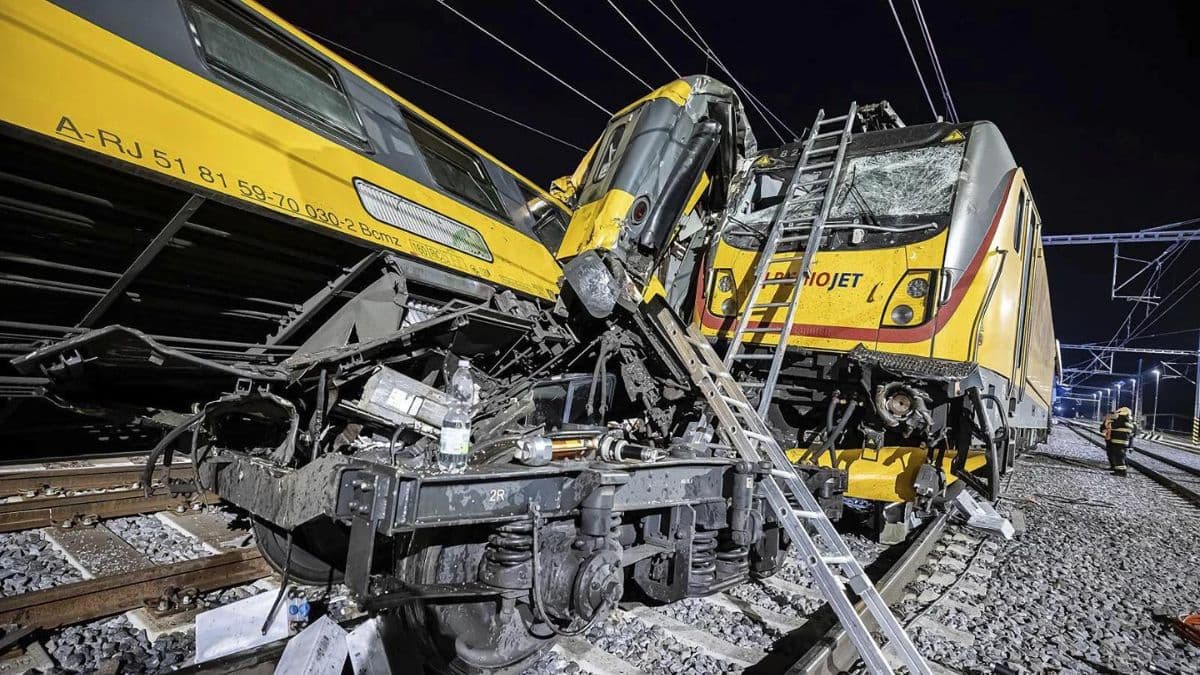Train Collision in Southern Czech Republic Injures 57, Halts Services
An express train collided with a passenger train between Zliv and Dívčice in the České Budějovice region on November 20, injuring 57 people and disrupting rail traffic between České Budějovice and Plzeň. The scale of injuries and the suspension of a key regional route underscore immediate public safety concerns and could reverberate through regional travel, freight logistics, and policy debates on rail investment.

Emergency crews worked through the day after two trains collided on the line between Zliv and Dívčice in the České Budějovice region on November 20, injuring 57 people, authorities said. Regional rescue services reported the majority of injuries were light, while several passengers were hospitalized and later updates indicated some victims were seriously injured. Local hospitals received the wounded and treated a mix of trauma and shock related injuries.
The collision halted traffic on the route between České Budějovice and Plzeň, a corridor that serves both commuter and freight traffic across southern Bohemia. Authorities limited train movements while crews cleared the site and assisted passengers, and the national operator and police opened investigations to determine the cause. Officials said inquiries will examine signaling systems, the possibility of human error, and any track problems as investigators piece together the sequence of events.
Beyond the immediate human toll, the crash has economic implications for the region. The interrupted service affects daily commuters and tourists, and it is likely to ripple through freight chains that rely on the line for regional deliveries. Even a short suspension on a busy corridor can force businesses to reroute shipments to road transport, raising costs and increasing congestion. For a national rail system that is a backbone for many industrial and agricultural flows, such disruptions add to operating uncertainty and insurance costs for carriers.
The accident arrives amid ongoing debates in the Czech Republic and across Europe about the need to modernize rail infrastructure. Safety advocates and some policymakers have argued for accelerated investment in signaling upgrades, expanded automatic train control technologies, and more frequent track maintenance. Investigators will be looking closely at whether antiquated equipment or lapses in maintenance played a role, which could feed into arguments for reallocating public funds. The European Union has programs intended to support cross border and domestic rail upgrades, and a high profile accident tends to increase pressure on governments to tap those funds or to boost national spending.
For passengers, the immediate concern is restoring reliable service and ensuring adequate care for the injured. For markets and municipal planners, the incident is a reminder of the economic value of resilient transport links and the costs of disruption. Insurers and rail operators will monitor casualty and damage claims, while businesses dependent on timely deliveries will weigh contingency measures. Over the longer term, the crash may accelerate regulatory attention to rail safety standards and infrastructure renewal priorities, especially if investigators point to systemic failings rather than an isolated error.
Investigations are ongoing and authorities have not yet released a final determination on the cause. Rail services on the affected stretch will remain restricted as emergency and repair work continues and as officials work to ensure the line can reopen safely.

